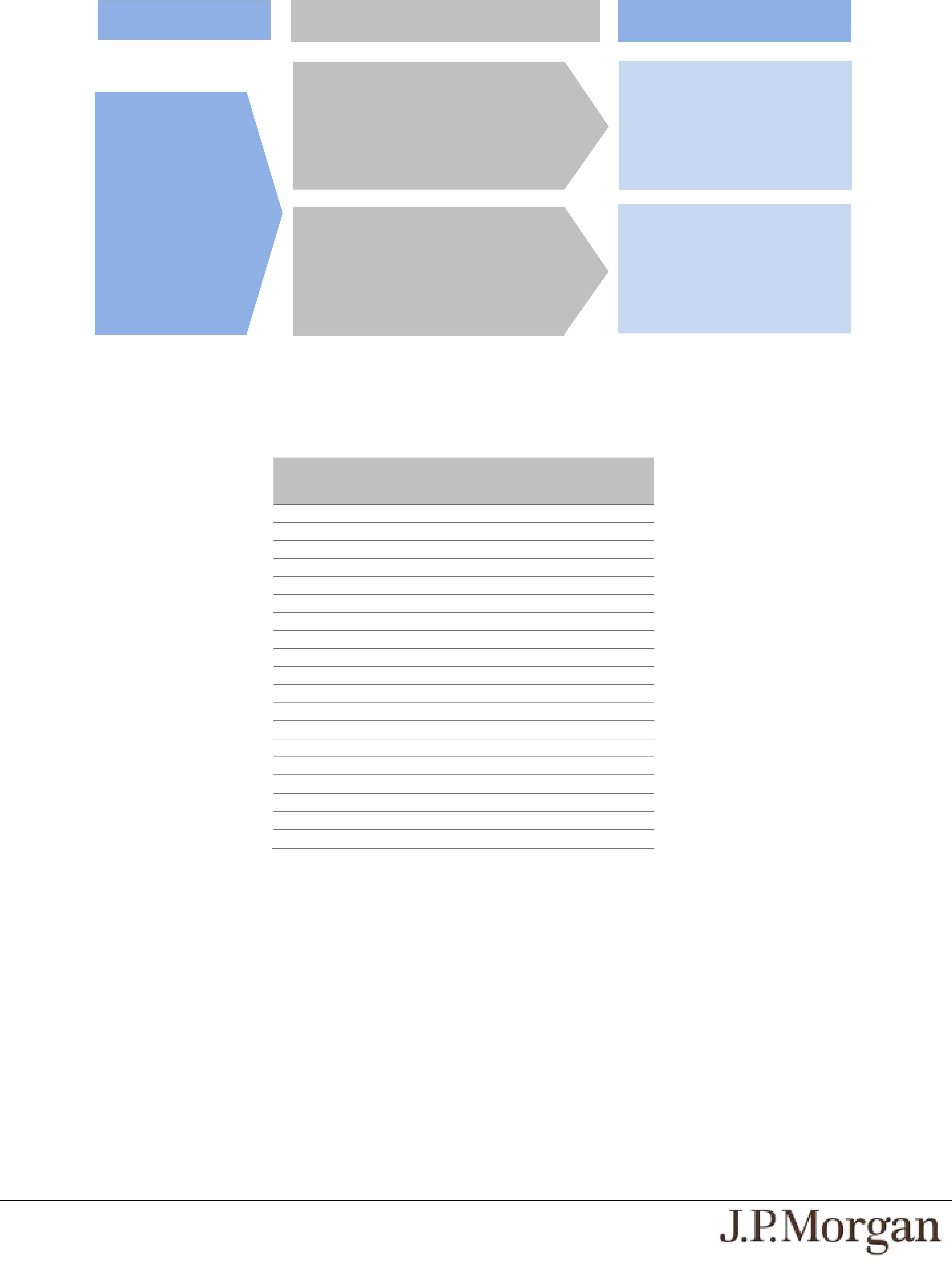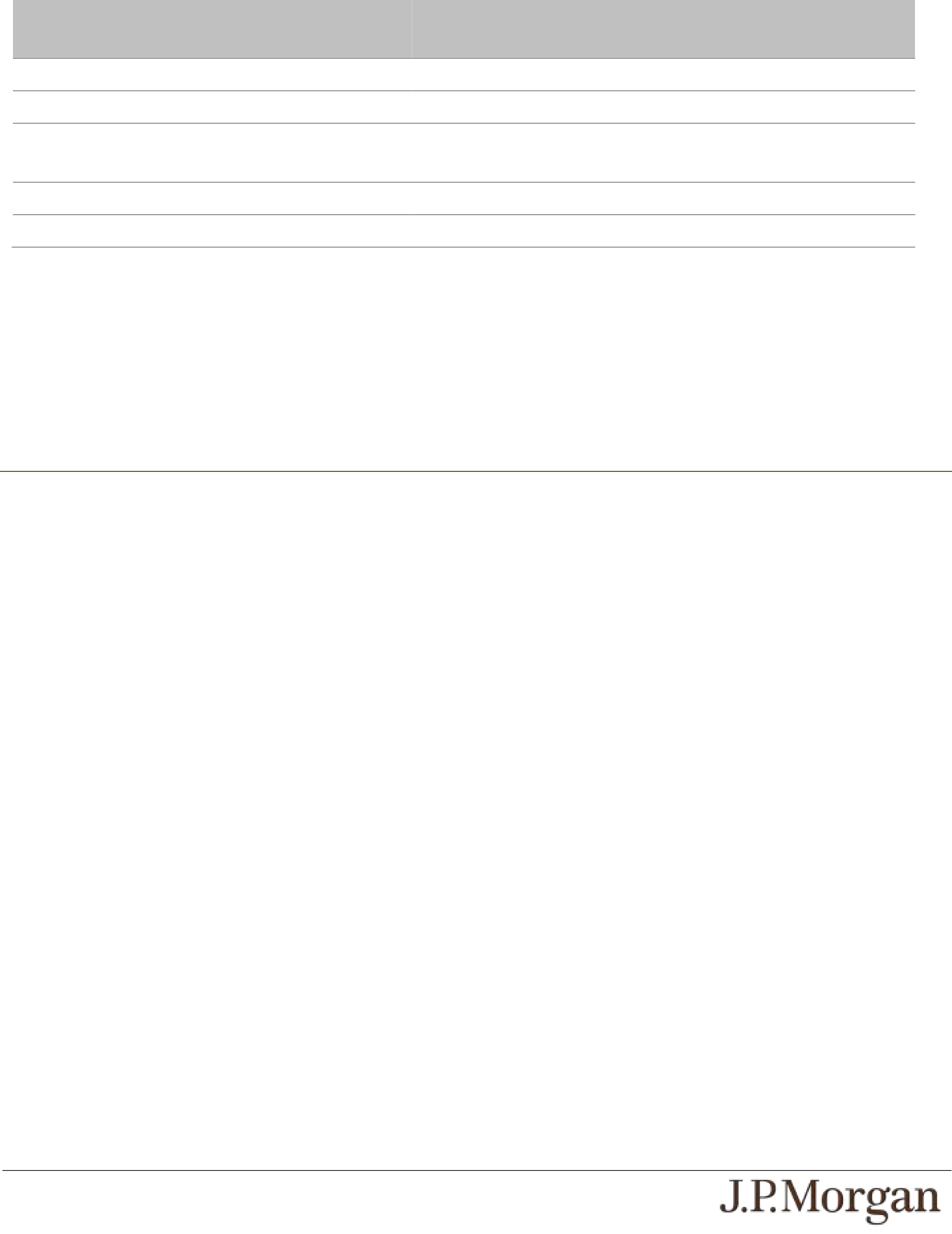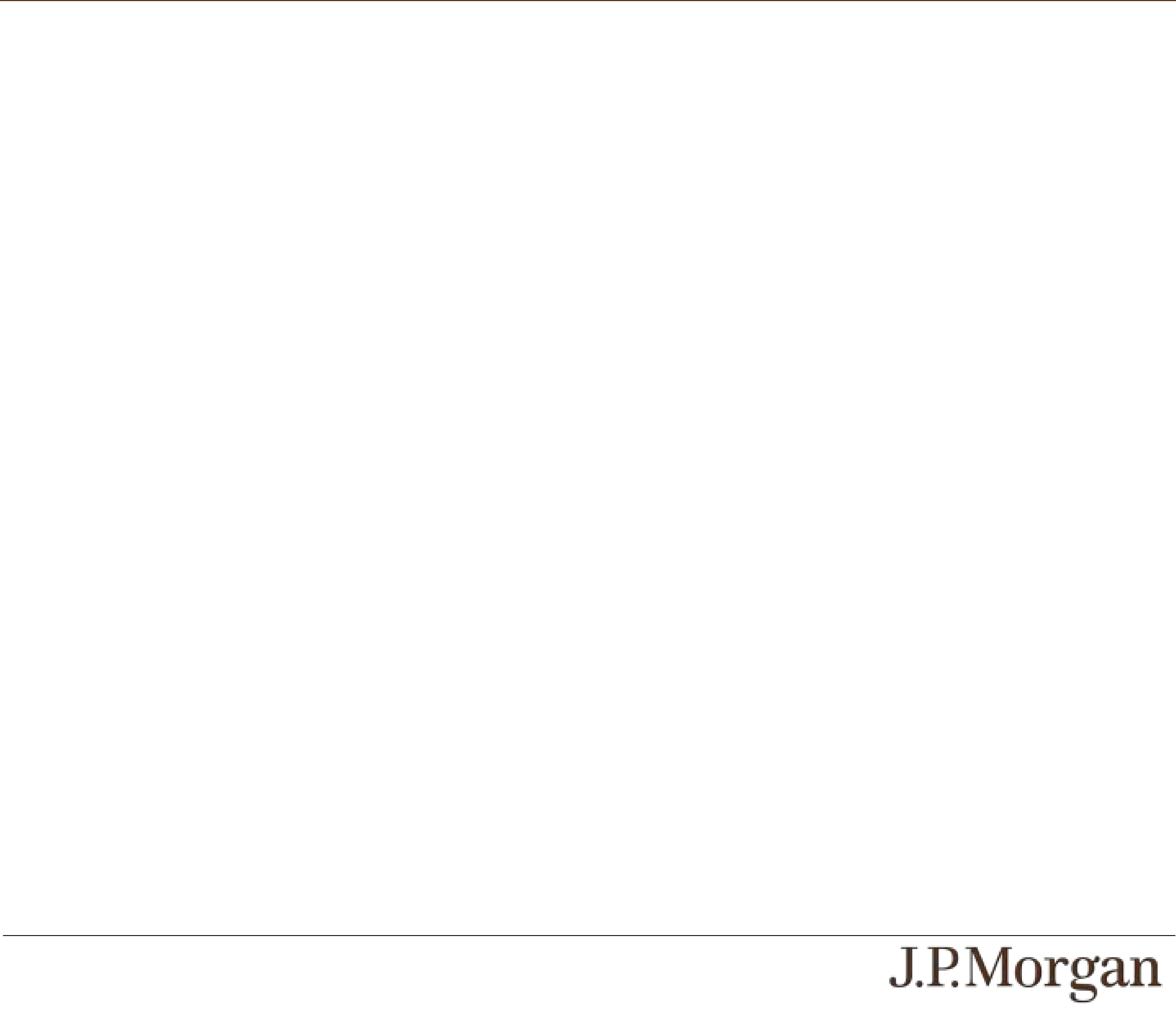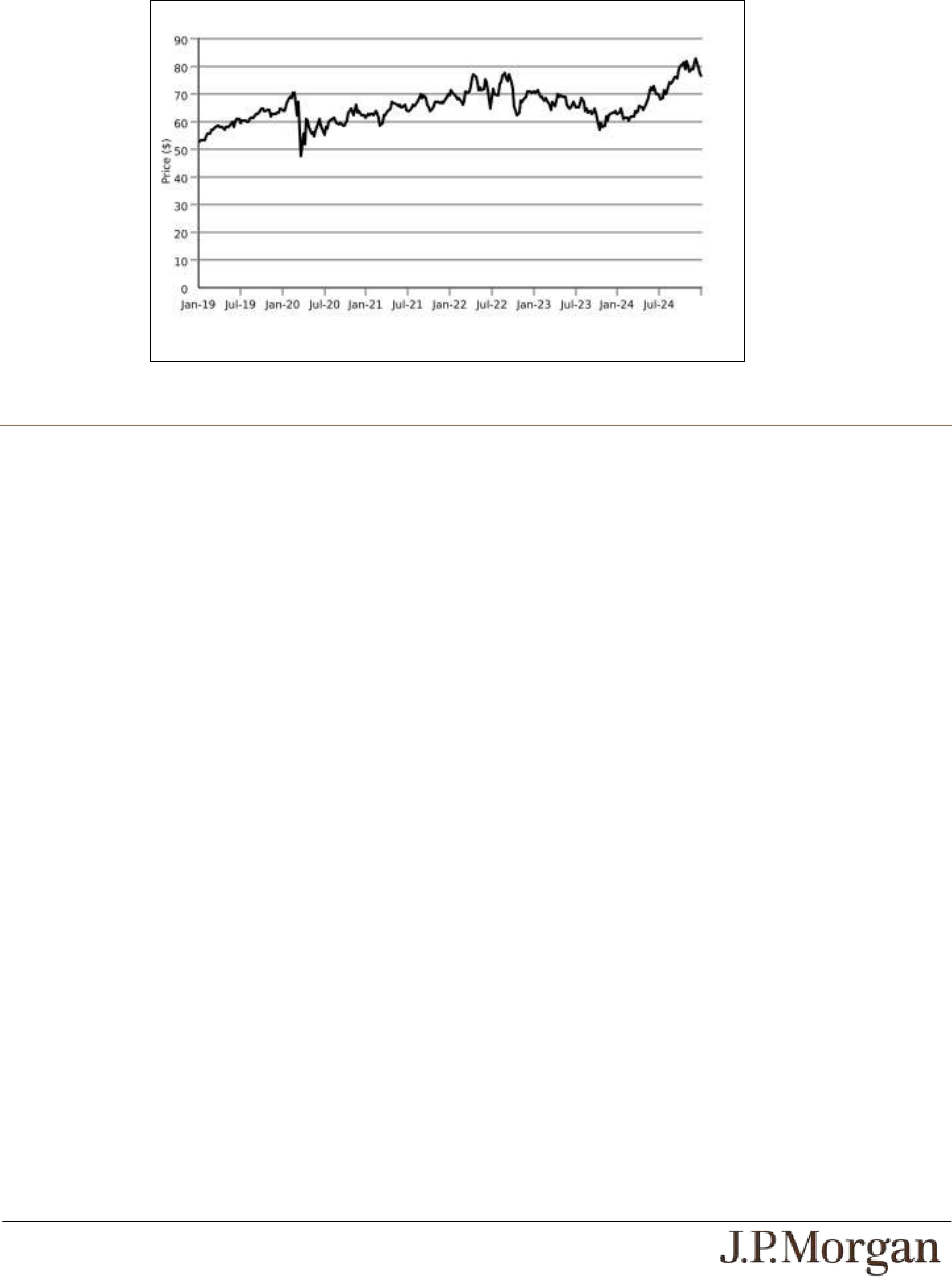● POTENTIAL CONFLICTS —
We and our affiliates play a variety of roles in connection with the notes. In performing these duties, our and JPMorgan Chase &
Co.’s economic interests are potentially adverse to your interests as an investor in the notes. It is possible that hedging or trading
activities of ours or our affiliates in connection with the notes could result in substantial returns for us or our affiliates while the
value of the notes declines. Please refer to “Risk Factors — Risks Relating to Conflicts of Interest” in the accompanying product
supplement.
● THERE ARE RISKS ASSOCIATED WITH THE FUNDS —
The Funds are subject to management risk, which is the risk that the investment strategies of the applicable Fund’s investment
adviser, the implementation of which is subject to a number of constraints, may not produce the intended results. These constraints
could adversely affect the market prices of the shares of the Funds and, consequently, the value of the notes.
● THE PERFORMANCE AND MARKET VALUE OF EACH FUND, PARTICULARLY DURING PERIODS OF MARKET
VOLATILITY, MAY NOT CORRELATE WITH THE PERFORMANCE OF THAT FUND’S UNDERLYING INDEX AS WELL AS
THE NET ASSET VALUE PER SHARE —
Each Fund does not fully replicate its Underlying Index (as defined under “The Funds” below) and may hold securities different
from those included in its Underlying Index. In addition, the performance of each Fund will reflect additional transaction costs and
fees that are not included in the calculation of its Underlying Index. All of these factors may lead to a lack of correlation between
the performance of each Fund and its Underlying Index. In addition, corporate actions with respect to the equity securities
underlying each Fund (such as mergers and spin-offs) may impact the variance between the performances of that Fund and its
Underlying Index. Finally, because the shares of each Fund are traded on a securities exchange and are subject to market supply
and investor demand, the market value of one share of each Fund may differ from the net asset value per share of that Fund.
During periods of market volatility, securities underlying each Fund may be unavailable in the secondary market, market
participants may be unable to calculate accurately the net asset value per share of that Fund and the liquidity of that Fund may be
adversely affected. This kind of market volatility may also disrupt the ability of market participants to create and redeem shares of
each Fund. Further, market volatility may adversely affect, sometimes materially, the prices at which market participants are willing
to buy and sell shares of a Fund. As a result, under these circumstances, the market value of shares of a Fund may vary
substantially from the net asset value per share of that Fund. For all of the foregoing reasons, the performance of each Fund may
not correlate with the performance of its Underlying Index as well as the net asset value per share of that Fund, which could
materially and adversely affect the value of the notes in the secondary market and/or reduce any payment on the notes.
● RISKS ASSOCIATED WITH THE UTILITIES SECTOR WITH RESPECT TO THE UTILITIES SELECT SECTOR SPDR® FUND —
All or substantially all of the equity securities held by the Utilities Select Sector SPDR® Fund are issued by companies whose
primary line of business is directly associated with the utilities sector. As a result, the value of the notes may be subject to greater
volatility and be more adversely affected by a single economic, political or regulatory occurrence affecting this sector than a
different investment linked to securities of a more broadly diversified group of issuers. Utility companies are affected by supply and
demand, operating costs, government regulation, environmental factors, liabilities for environmental damage and general civil
liabilities and rate caps or rate changes. Although rate changes of a regulated utility usually fluctuate in approximate correlation
with financing costs, due to political and regulatory factors, rate changes ordinarily occur only following a delay after the changes in
financing costs. This factor will tend to favorably affect a regulated utility company’s earnings and dividends in times of decreasing
costs, but conversely, will tend to adversely affect earnings and dividends when costs are rising. The value of regulated utility
equity securities may tend to have an inverse relationship to the movement of interest rates. Certain utility companies have
experienced full or partial deregulation in recent years. These utility companies are frequently more similar to industrial companies
in that they are subject to greater competition and have been permitted by regulators to diversify outside of their original
geographic regions and their traditional lines of business. These opportunities may permit certain utility companies to earn more
than their traditional regulated rates of return. Some companies, however, may be forced to defend their core business and may
be less profitable. In addition, natural disasters, terrorist attacks, government intervention or other factors may render a utility
company’s equipment unusable or obsolete and negatively impact profitability. Among the risks that may affect utility companies
are the following: risks of increases in fuel and other operating costs; the high cost of borrowing to finance capital construction
during inflationary periods; restrictions on operations and increased costs and delays associated with compliance with
environmental and nuclear safety regulations; and the difficulties involved in obtaining natural gas for resale or fuel for generating
electricity at reasonable prices. Other risks include those related to the construction and operation of nuclear power plants, the
effects of energy conservation and the effects of regulatory changes. These factors could affect the utilities sector and could affect
the value of the equity securities held by the Utilities Select Sector SPDR® Fund and the price of the Utilities Select Sector SPDR®
Fund during the term of the notes, which may adversely affect the value of your notes.
● RISKS ASSOCIATED WITH THE HEALTH CARE SECTOR WITH RESPECT TO THE HEALTH CARE SELECT SECTOR
SPDR® FUND —
All or substantially all of the equity securities held by the Health Care Select Sector SPDR® Fund are issued by companies whose
primary line of business is directly associated with the health care sector. As a result, the value of the notes may be subject to
greater volatility and be more adversely affected by a single economic, political or regulatory occurrence affecting this sector than a
different investment linked to securities of a more broadly diversified group of issuers. Companies in the health care sector are
subject to extensive government regulation and their profitability can be significantly affected by restrictions on government
reimbursement for medical expenses, rising costs of medical products and services, pricing pressure (including price discounting),
limited product lines and an increased emphasis on the delivery of healthcare through outpatient services. Companies in the health
care sector are heavily dependent on obtaining and defending patents, which may be time consuming and costly, and the
expiration of patents may also adversely affect the profitability of these companies. Health care companies are also subject to
extensive litigation based on product liability and similar claims. In addition, their products can become obsolete due to industry
innovation, changes in technologies or other market developments. Many new products in the health care sector require significant
research and development and may be subject to regulatory approvals, all of which may be time consuming and costly with no
guarantee that any product will come to market. These factors could affect the health care sector and could affect the value of the
equity securities held by the Health Care Select Sector SPDR® Fund and the price of the Health Care Select Sector SPDR® Fund
during the term of the notes, which may adversely affect the value of your notes.













